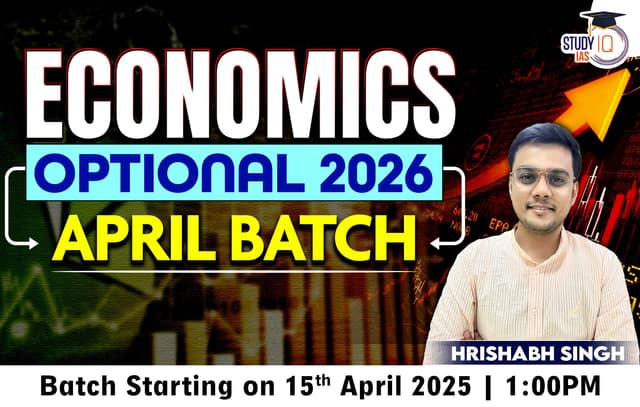Table of Contents
Context
- As per the International Monetary Fund (IMF), India is expected to surpass Japan and become the fourth-largest economy globally by the end of 2025.
- By 2027, it is projected to overtake Germany to become the third-largest, positioning the U.S., China, and India as the top three global economies.
More In News
- India’s GDP is projected to increase from $3.5 trillion to $5.8 trillion by the end of the current government’s term, marking an addition of $2.3 trillion, approximately the combined size of Spain and Netherlands’ economies today.
- The expected average real growth rate is 6.5% during this period, which aligns with historical growth trends but is less than the rates seen in the mid-2000s.
What are the Challenges?
- Employment and Productivity: The number of informal enterprises has grown from 5.76 crore in 2010-11 to 6.5 crore in 2022-23, with around 11 crore workers engaged in these enterprises.
- These enterprises, often one-man roadside shops, show low levels of productivity and value addition (Rs 1.4 lakh compared to Rs 15.04 lakh in formal enterprises).
- Wages in the informal sector have barely kept pace with inflation, indicating little to no real wage growth over the last decade.
- Nearly two-thirds of the labour force is engaged in low-productivity jobs in agriculture and other less productive sectors.
- Structural and Sectoral Concerns: The rising capital intensity of production, especially in sectors that are traditionally labour-intensive, is reducing job creation opportunities.
- A decline in Railway passenger traffic suggests a reduction in migration, which traditionally helped transfer resources from urban to rural areas.
- Government and Fiscal Policies: The persistence of employment issues may force the government to continue fiscal transfers to support the less affluent.
- Tax collections from surcharges on high-income individuals have significantly increased, from Rs 1,343 crore in 2014-15 to Rs 65,000 crore in 2023-24.
- Social and Economic Implications: The lack of productive job creation and a deepening labour market duality could lead to reduced social mobility and increased income inequality.
- The trajectory of India’s economic and social structure could either follow the path of East Asia or lean towards the patterns observed in Latin America, depending on how these challenges are addressed.
Conclusion
India’s projected economic growth positions it as a major global player, but significant challenges in employment and productivity could undermine these advancements. The government’s response to these challenges will be crucial in determining India’s future economic and social landscape.


 Utkal Divas 2025: Odisha Foundation Day ...
Utkal Divas 2025: Odisha Foundation Day ...
 List of Military Exercises of India 2024...
List of Military Exercises of India 2024...
 GPS Spoofing and Its Impact in India: A ...
GPS Spoofing and Its Impact in India: A ...





















